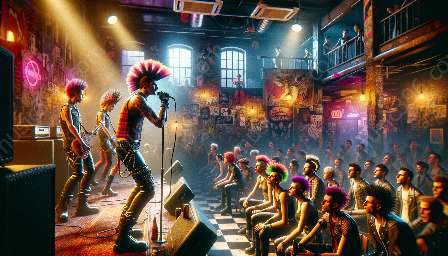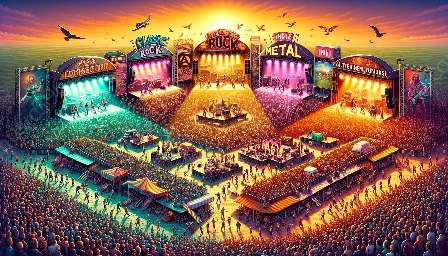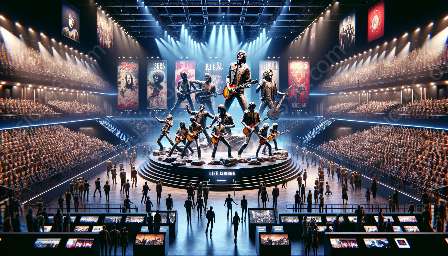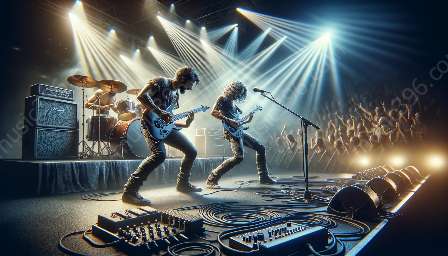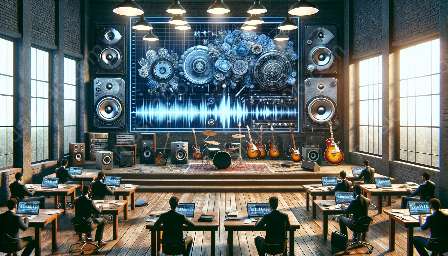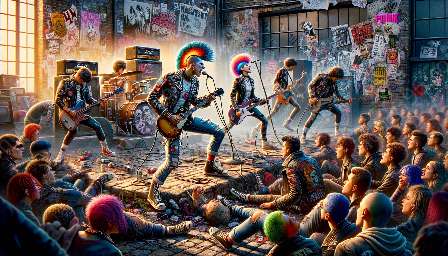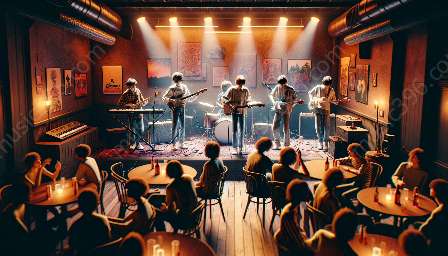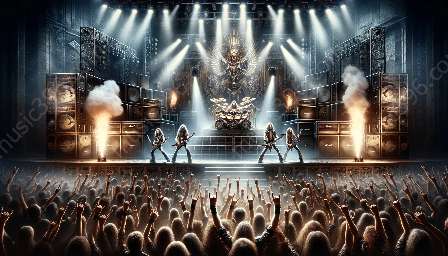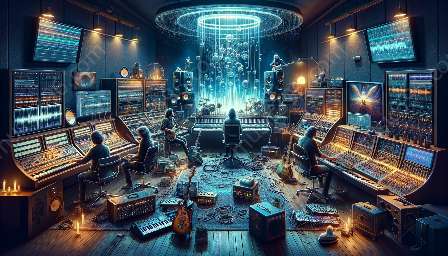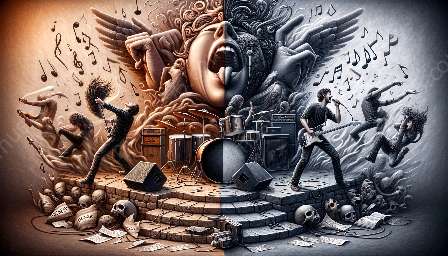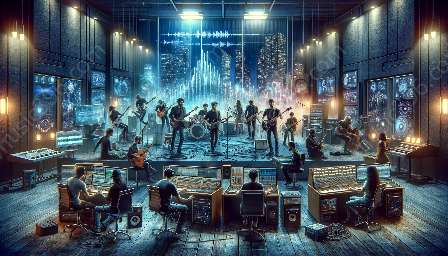Heavy metal and rock music have been heavily influenced by advancements in technology, particularly in the realm of music production. The fusion of technology and music has led to transformations in the ways artists create, record, and produce metal music, shaping the genre in new and exciting ways.
In this topic cluster, we will delve into the evolution of technology's role in metal music production, exploring how it has shaped the sound and production of metal and rock music. From the early days of analog recording to the modern digital era, we will examine the impact of technology on the creation of iconic metal music, and how it has contributed to the genre's sonic landscape.
The Evolution of Recording Technology in Metal Music
Early metal music was often recorded on analog tape, capturing the raw energy and aggression of the genre. As technology progressed, the introduction of multitrack recording allowed for greater flexibility in the studio, enabling metal bands to experiment with layering and overdubbing to craft their intense soundscapes.
With the advent of digital recording, metal music production underwent a seismic shift. Digital audio workstations (DAWs) empowered artists to manipulate and refine their recordings with unprecedented precision, opening up new creative possibilities in the production process. This transition from analog to digital marked a watershed moment in metal music production, enabling bands to achieve previously unattainable levels of sonic complexity and impact.
Impact of Technology on Sound Engineering in Metal Music
Technology has revolutionized sound engineering in metal music, allowing for the creation of signature tones and textures that define the genre. The use of guitar amplifiers, effects pedals, and speaker cabinets has been pivotal in shaping the aggressive and distorted guitar sounds synonymous with metal and rock music. Advancements in amplifier modeling and digital signal processing have provided musicians with an expansive palette of sonic options, enabling them to sculpt their ideal guitar tones with unparalleled precision.
Drum production has also been profoundly influenced by technology, with the rise of virtual drum instruments and sample libraries offering a diverse array of drum sounds and textures. This has empowered metal producers to craft larger-than-life drum mixes, characterized by thunderous kick drums, intricate double bass patterns, and explosive fills, all made possible through the capabilities of modern drum programming and sound design tools.
Incorporating Electronic Elements and Synthesis in Metal Music
Technology has facilitated the integration of electronic elements and synthesis into metal music, expanding the sonic landscape of the genre. Synthesizers, samplers, and sequencers have become integral tools for incorporating atmospheric textures, industrial effects, and symphonic arrangements into metal compositions, enriching the genre with a diverse range of sonic colors and dynamics.
Artists have embraced the use of electronic elements to enhance their sonic expression, blurring the boundaries between traditional metal instrumentation and electronic soundscapes. From introspective ambient passages to apocalyptic industrial soundscapes, the fusion of electronic elements with metal music has broadened the genre's creative horizons, offering new avenues for artistic experimentation and innovation.
Role of Digital Tools and Software in Metal Music Production
Modern metal music production relies heavily on digital tools and software to achieve its characteristic intensity and depth. Virtual instrument libraries, amp simulators, and audio plugins have become indispensable in shaping the sonic landscape of metal and rock music, providing musicians and producers with a vast array of customizable sounds and effects.
Additionally, the use of digital effects processing, such as reverb, delay, and modulation, has played a vital role in sculpting the atmospheric and larger-than-life soundscapes prevalent in metal music. The accessibility and versatility of digital processing have empowered artists to craft immersive sonic environments, amplifying the emotional impact of their compositions and performances.
Integration of Technology in Live Performances and Concert Productions
Advancements in technology have not only transformed the recording and production processes but have also reshaped live performances and concert productions within the metal and rock music scene. From elaborate stage setups and lighting rigs to interactive digital visuals and projection mappings, technology has become an integral part of enhancing the live experience for both artists and audiences.
Artists harness the power of technology to amplify their stage presence, utilizing advanced lighting, pyrotechnics, and audiovisual effects to create immersive and visually stunning live performances. Furthermore, innovations in sound reinforcement and live sound mixing have enabled metal bands to deliver colossal and pristine sonic experiences in concert venues and festivals worldwide.
Collaborative and Remote Production in a Digital Age
Technology has revolutionized the collaborative nature of metal music production, allowing artists and producers to work together seamlessly regardless of geographical boundaries. Through the use of digital audio workstations, cloud-based file sharing, and real-time communication tools, musicians can engage in remote collaborations, exchanging ideas, recordings, and production elements with unprecedented ease and efficiency.
This digital approach to collaboration has empowered metal musicians to explore diverse creative partnerships and expand their artistic networks, fostering a global community of creators and collaborators. The ability to connect and create across continents has enriched the metal music landscape, breaking down barriers and facilitating the exchange of ideas and influences across diverse cultural and musical contexts.
The Future of Technology in Shaping Metal Music
As technology continues to evolve at a rapid pace, the future of metal music production holds endless possibilities for innovation and experimentation. From advancements in artificial intelligence and machine learning to the emergence of immersive audio technologies and virtual reality experiences, the fusion of technology and metal music is poised to embark on exciting frontiers, redefining the boundaries of sonic expression and creativity.
The convergence of technology with metal music promises to unlock new dimensions of artistic expression, offering artists the tools to push the genre's sonic boundaries and create immersive and boundary-defying sonic experiences. With each technological leap, metal music stands poised to harness the power of innovation, ensuring that the genre continues to evolve and captivate audiences with its uncompromising intensity and sonic allure.





